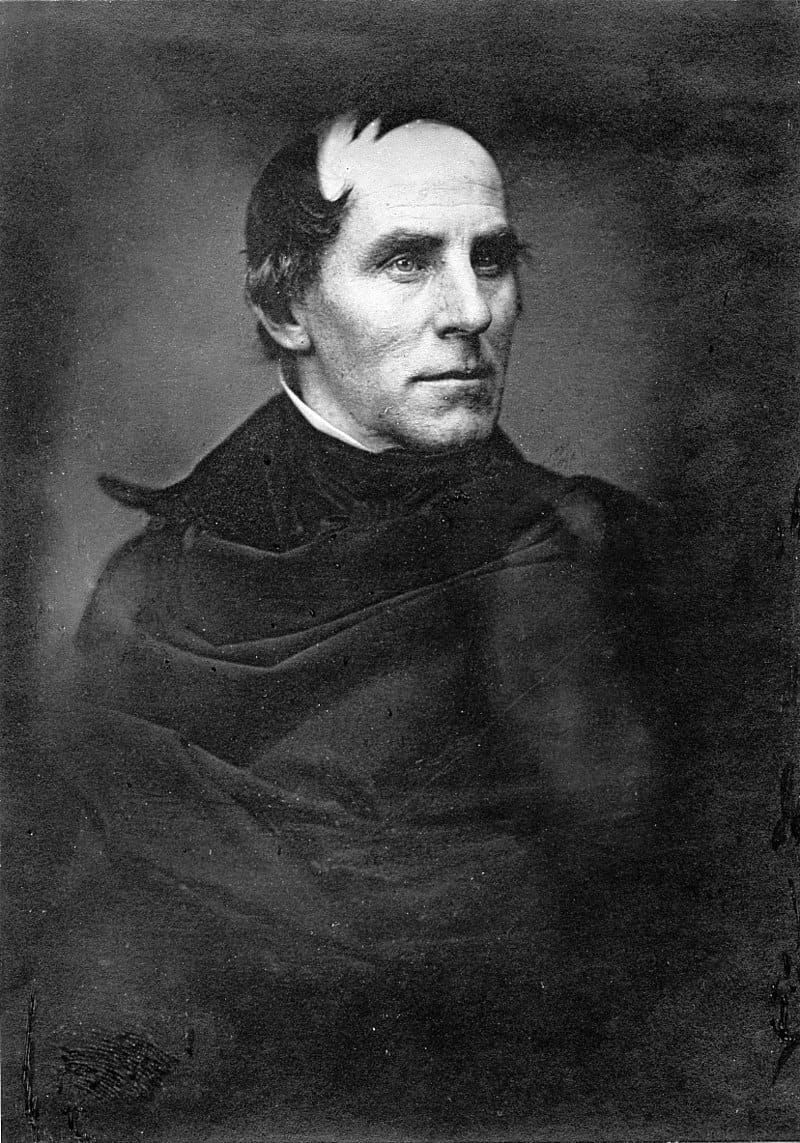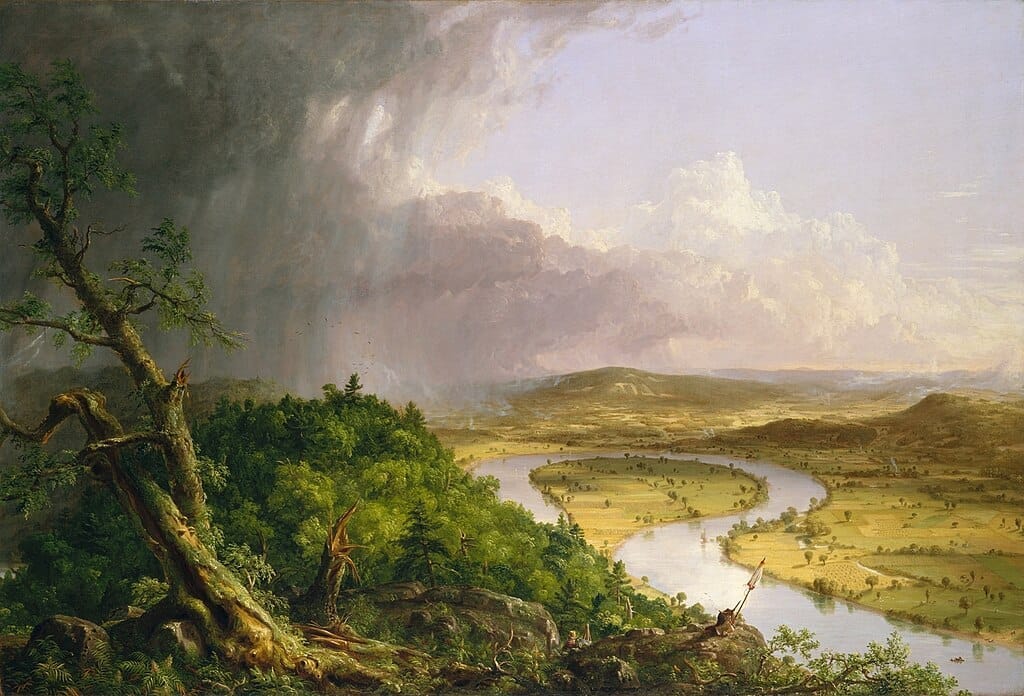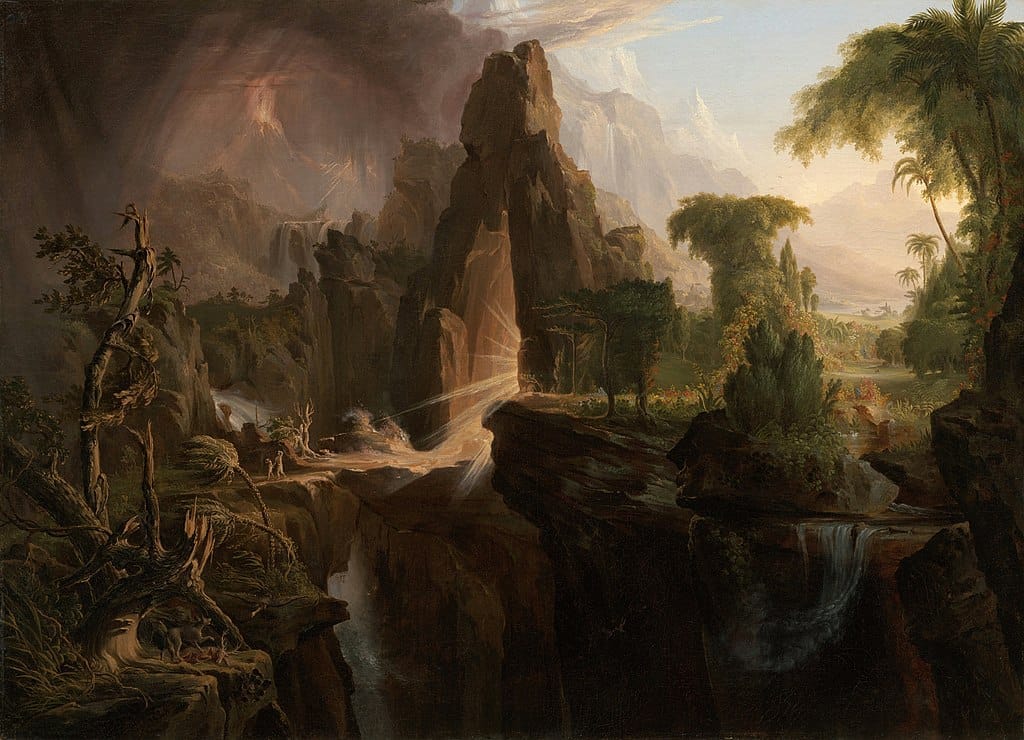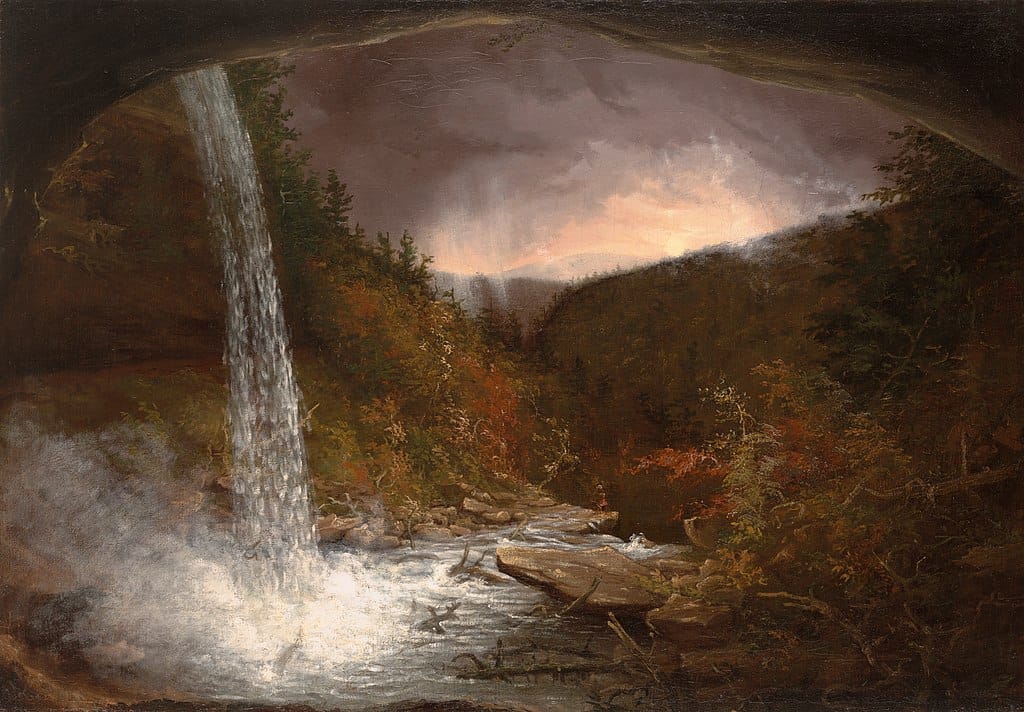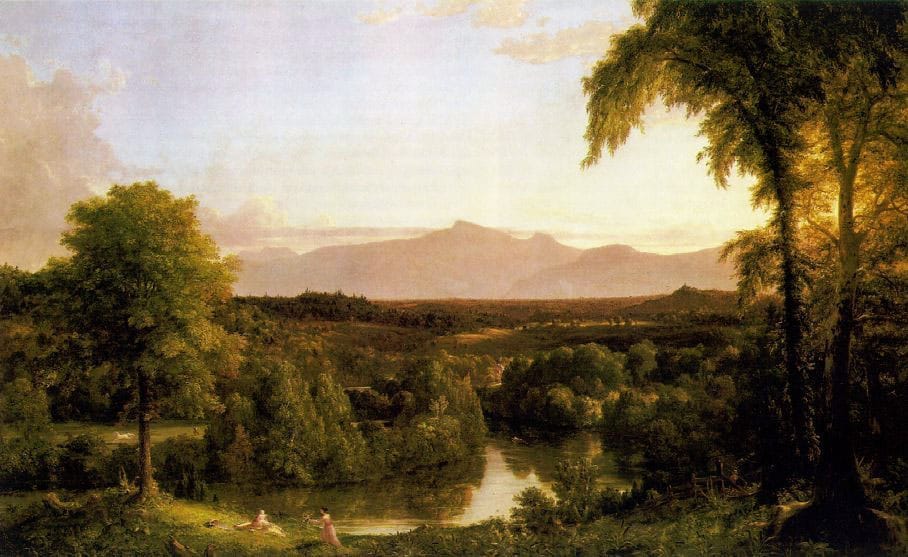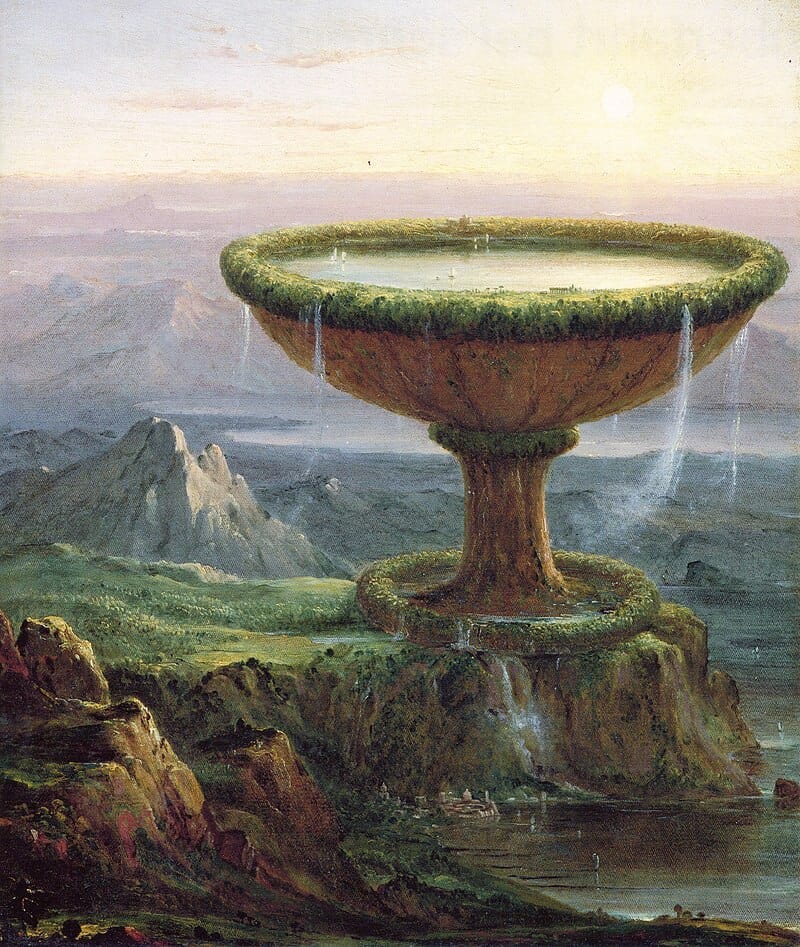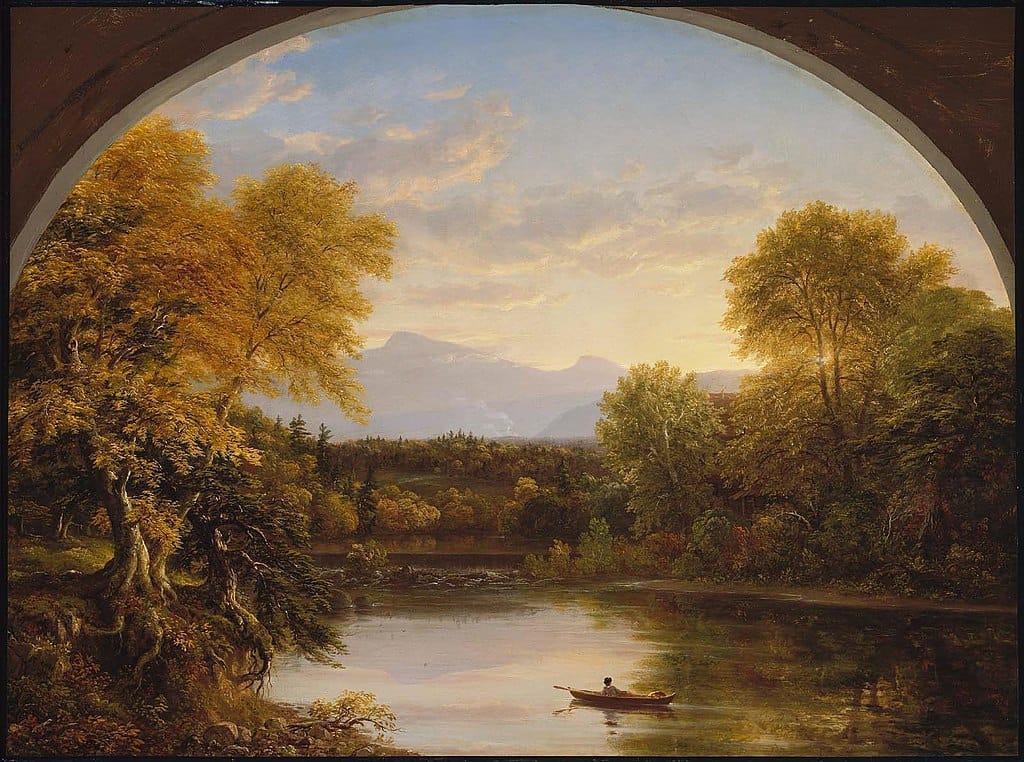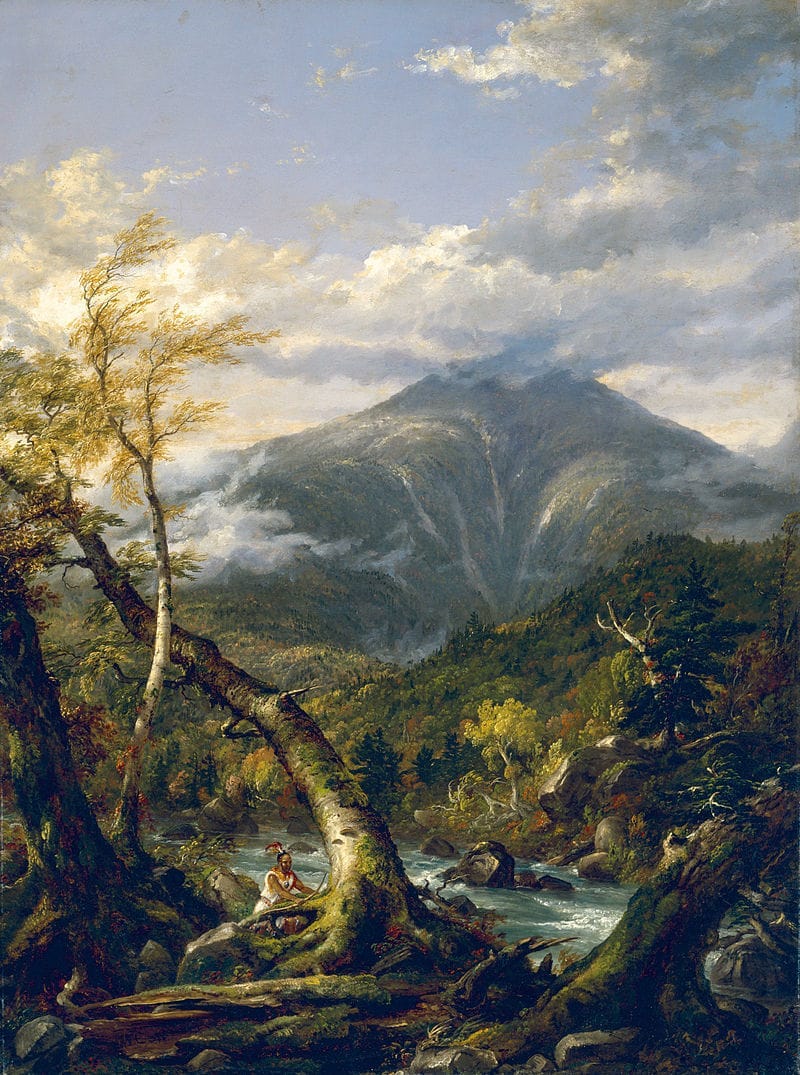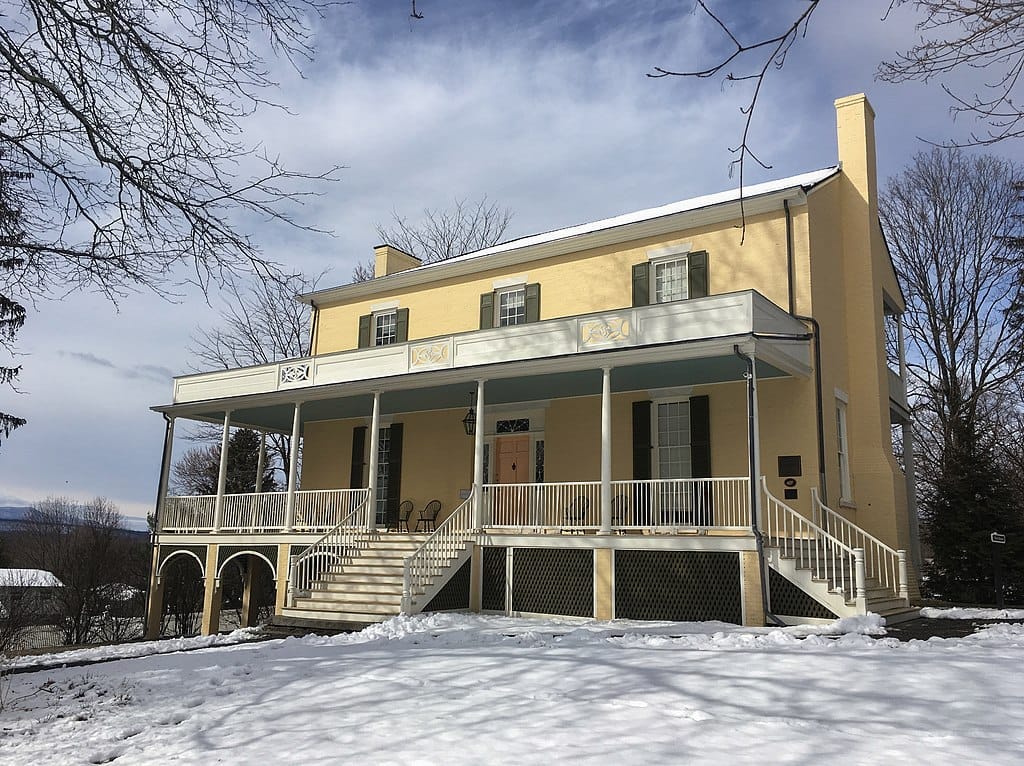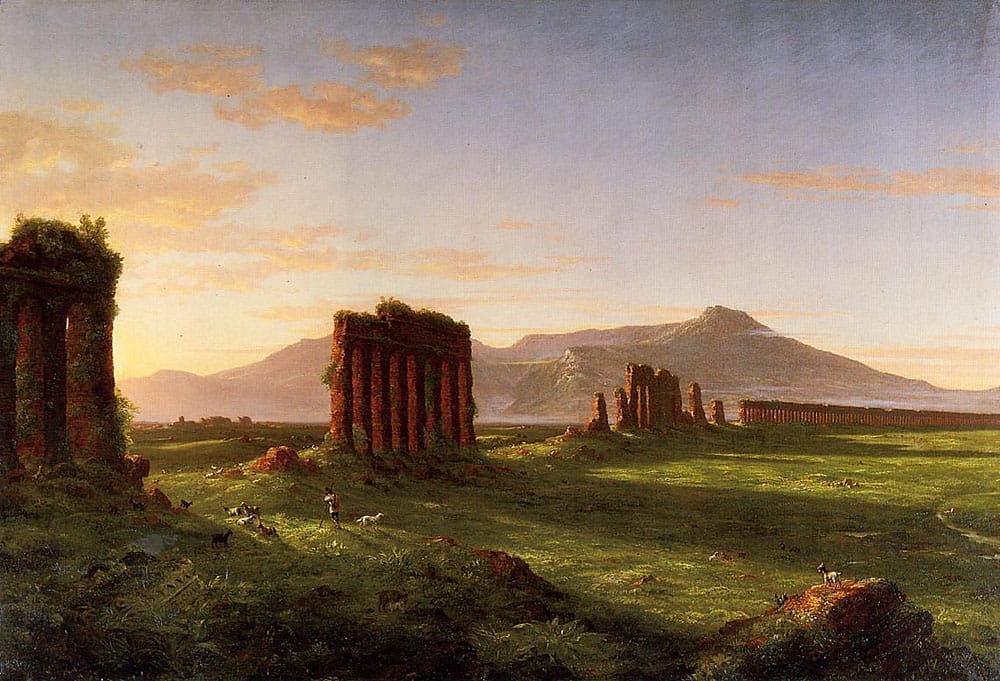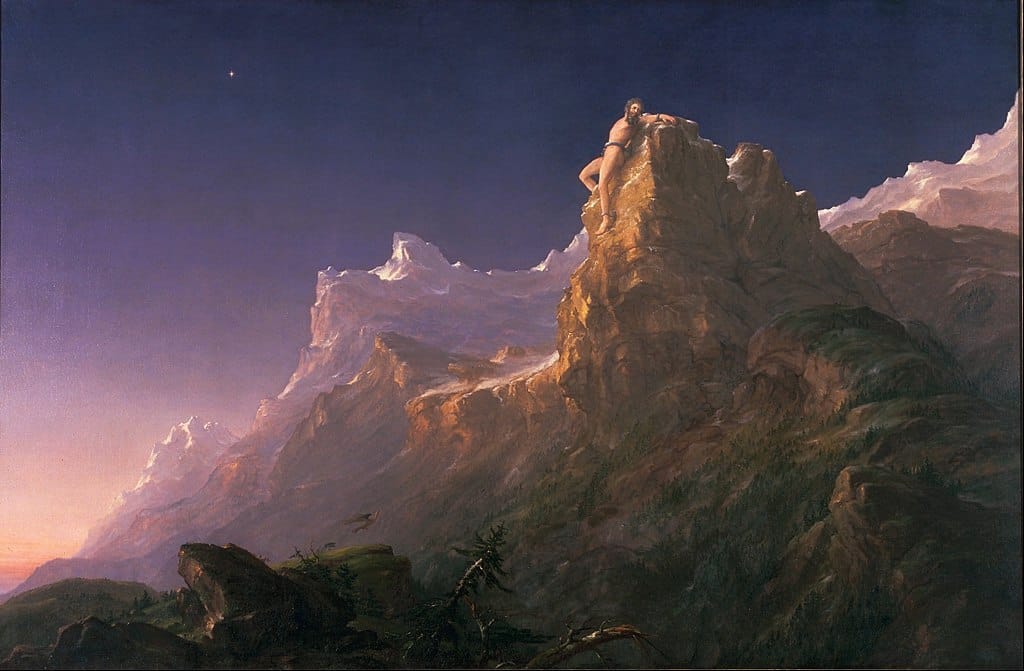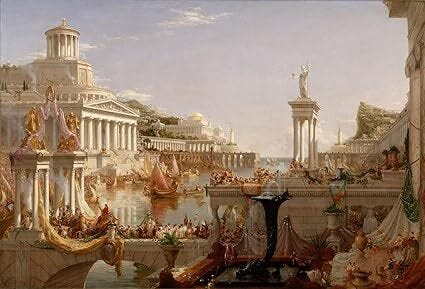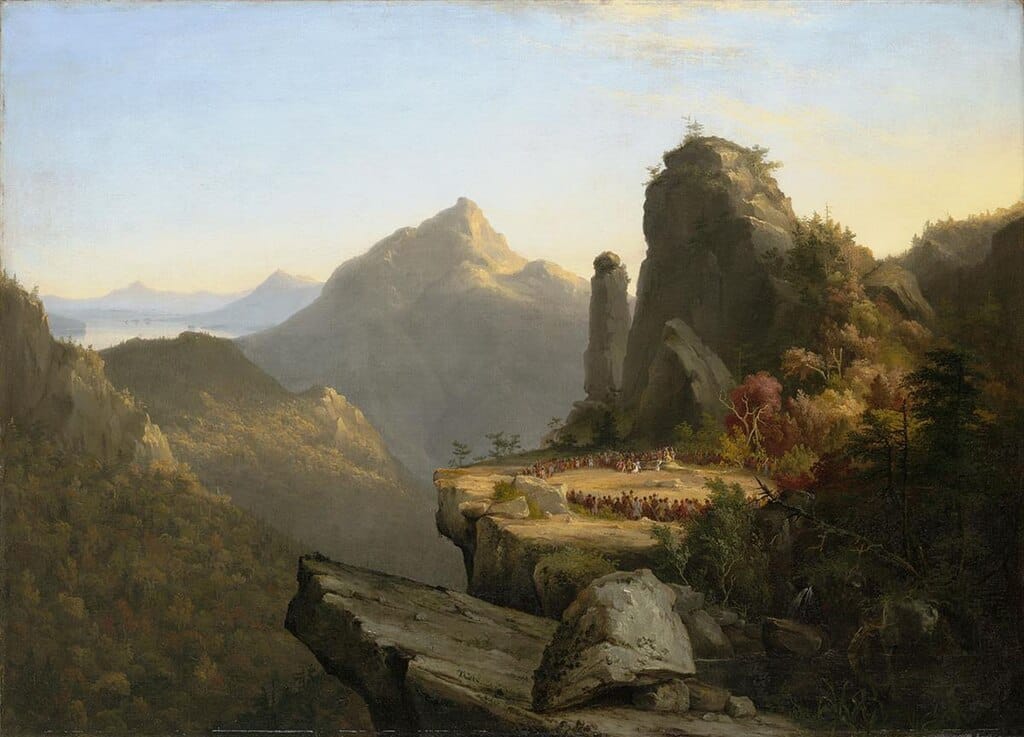Thomas Cole: The Poet of American Landscapes and the Legacy of the Hudson River School
Thomas Cole painted America’s wilderness as both paradise and prophecy, warning of a fragile beauty threatened by human ambition.
The Poet of American Landscapes
Thomas Cole, often called the father of American landscape painting, left an indelible mark on the art world with his breathtaking portrayals of nature. Born in 1801 in Lancashire, England, Cole moved with his family to the United States in 1818. The wild, untamed landscapes of America fascinated him, inspiring a style that celebrated the grandeur of nature. His art stood in contrast to the industrial revolution's encroachment, reminding viewers of the sublime beauty of untouched wilderness.
Cole’s rise began with his discovery of the Hudson River Valley. There, he painted “View from Mount Holyoke, Northampton, Massachusetts, after a Thunderstorm” (1836), also known as “The Oxbow.” This iconic piece shows a panoramic view of a meandering river juxtaposed with stormy skies. It symbolizes the tension between man’s cultivation of the land and nature’s raw power, making it a quintessential example of the Hudson River School, the movement Cole founded.
Another of Cole's masterpieces is his series “The Course of Empire” (1833–1836). This ambitious work consists of five paintings: “The Savage State,” “The Arcadian or Pastoral State,” “The Consummation of Empire,” “Destruction,” and “Desolation.” These canvases chronicle the rise and fall of a fictional civilization, mirroring Cole's concerns about the cyclical nature of history and the dangers of unchecked progress. The vivid storytelling and dramatic shifts in tone and lighting showcase his mastery of symbolism and technical precision.
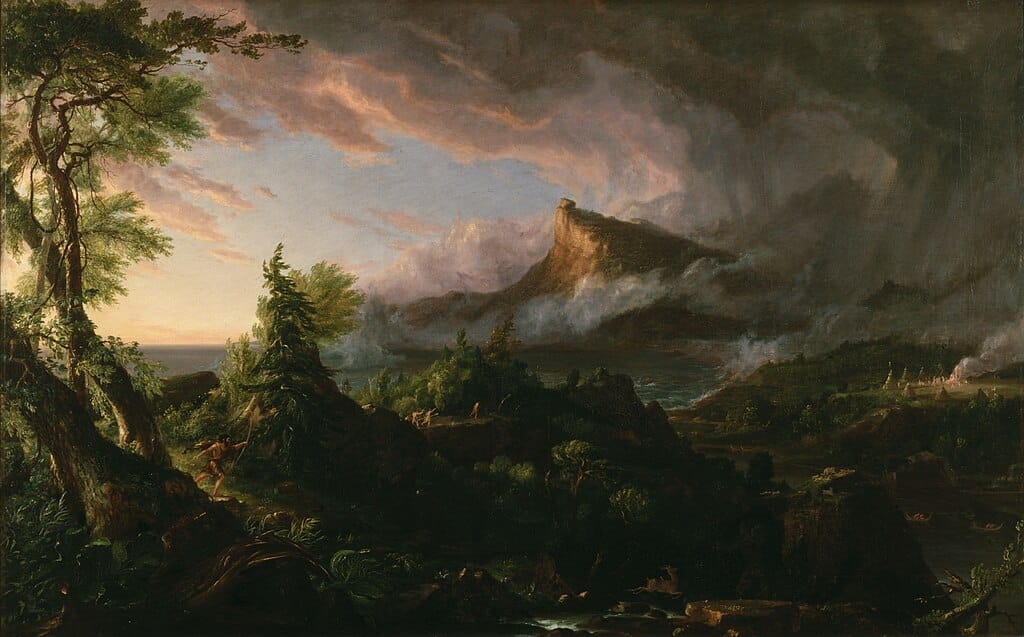
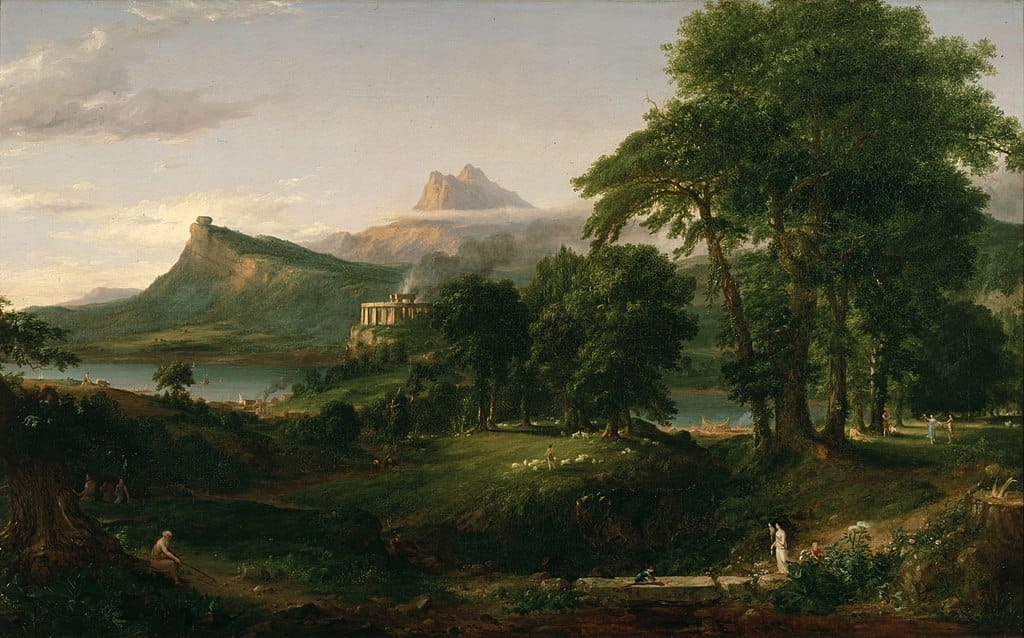
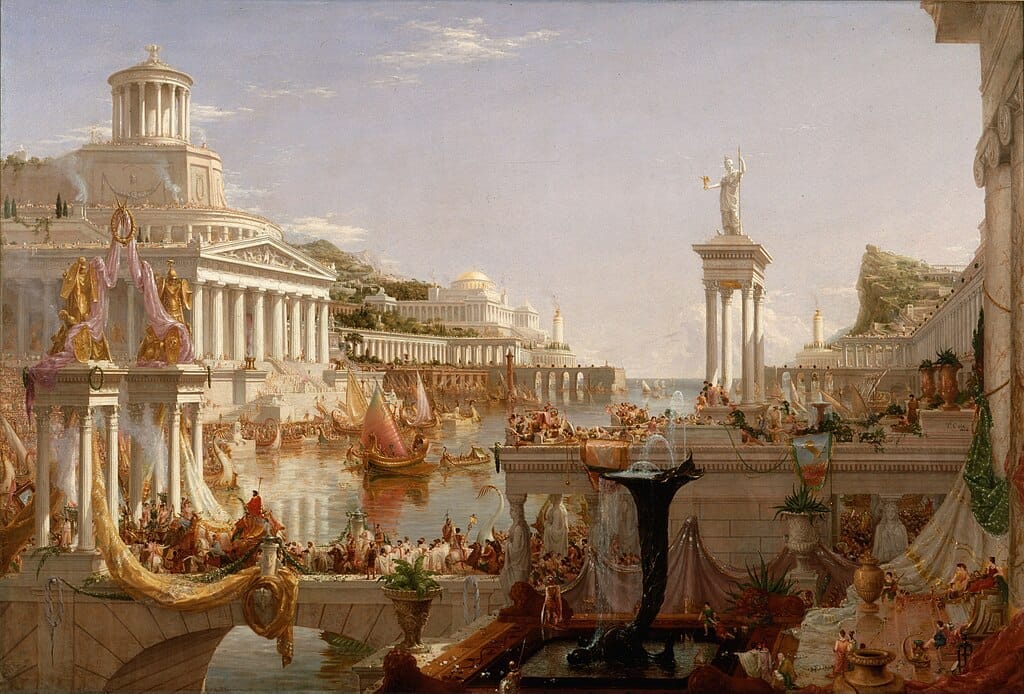
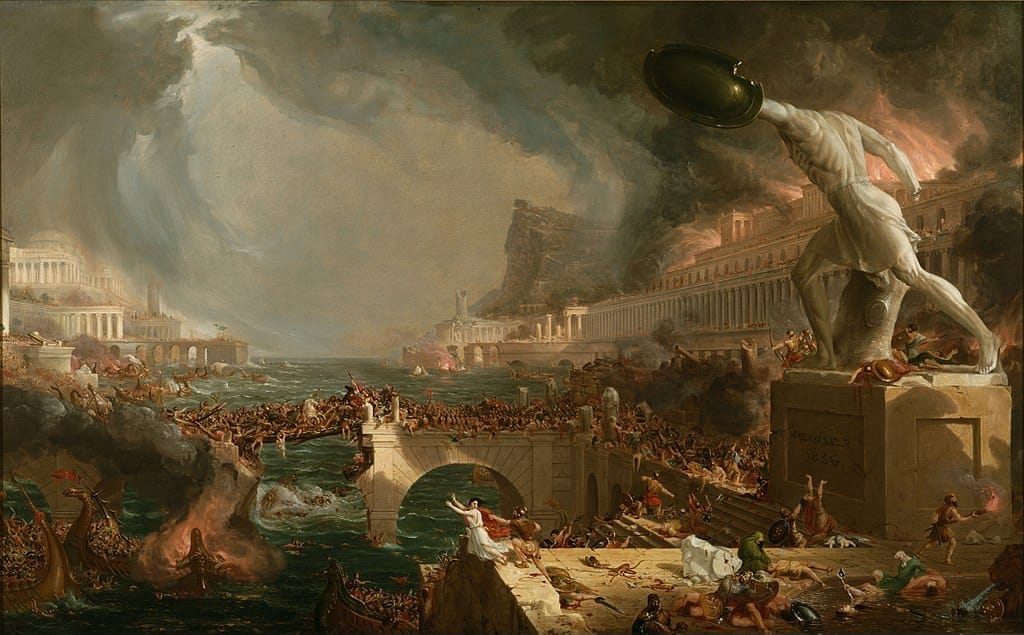
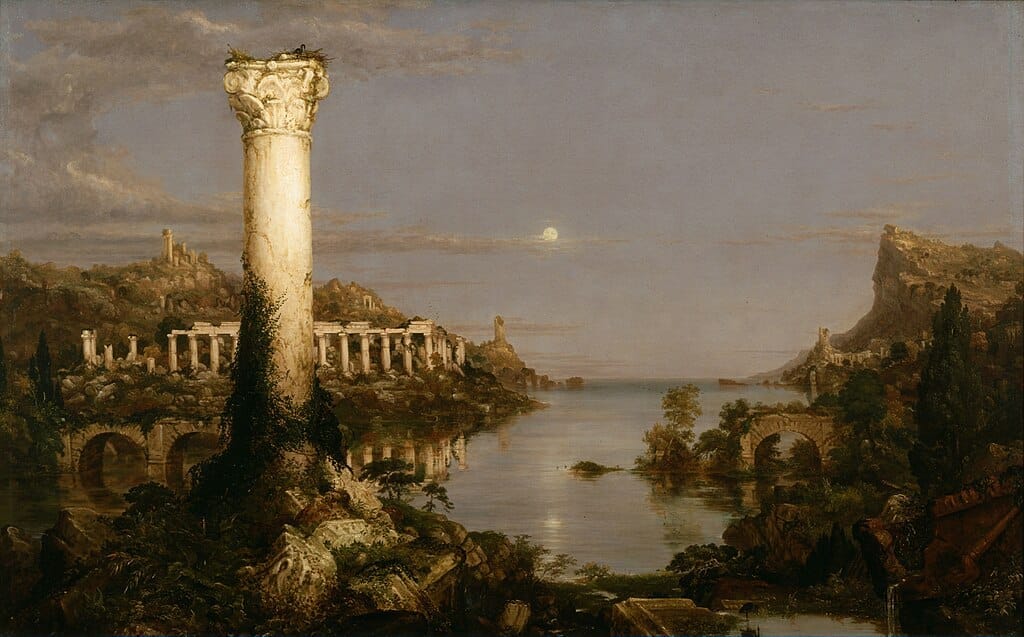
In “The Voyage of Life” (1842), Cole explored the stages of human life through a four-part allegory: “Childhood,” “Youth,” “Manhood,” and “Old Age.” Each painting features a boat journey down a river, with the changing landscapes reflecting the emotions and challenges of each stage of life. The series highlights Cole’s ability to weave narratives into his landscapes, blending beauty with moral lessons.
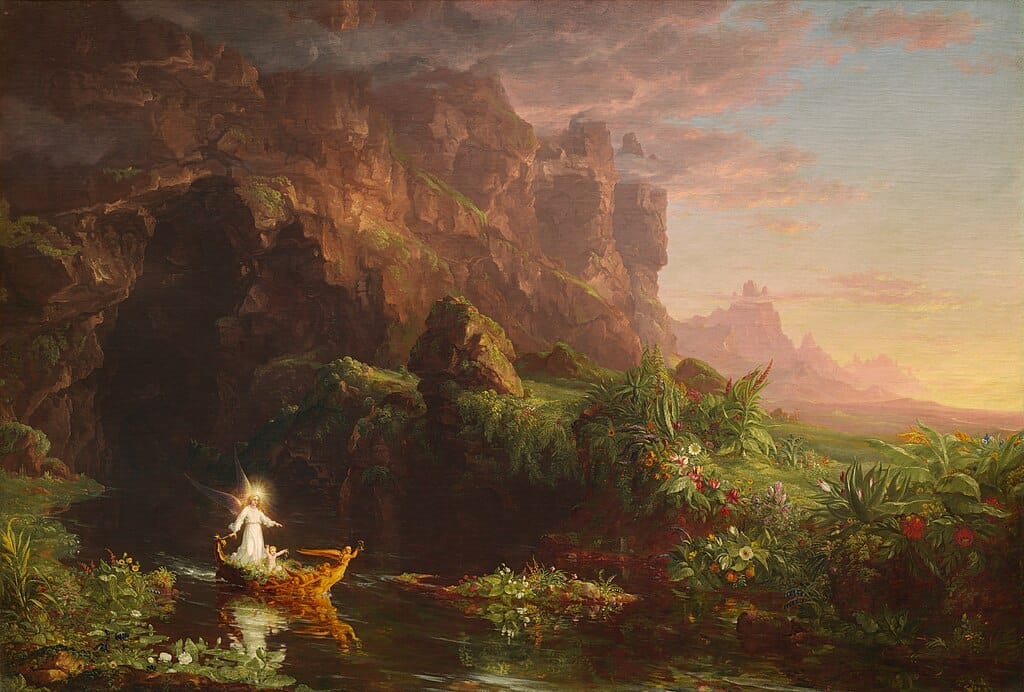
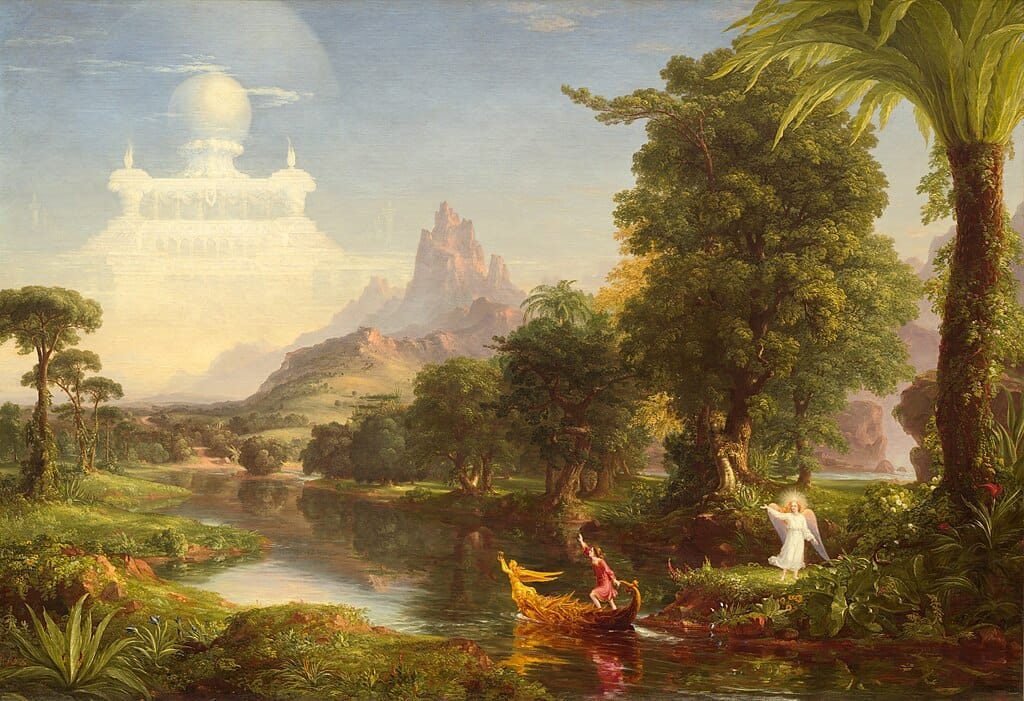
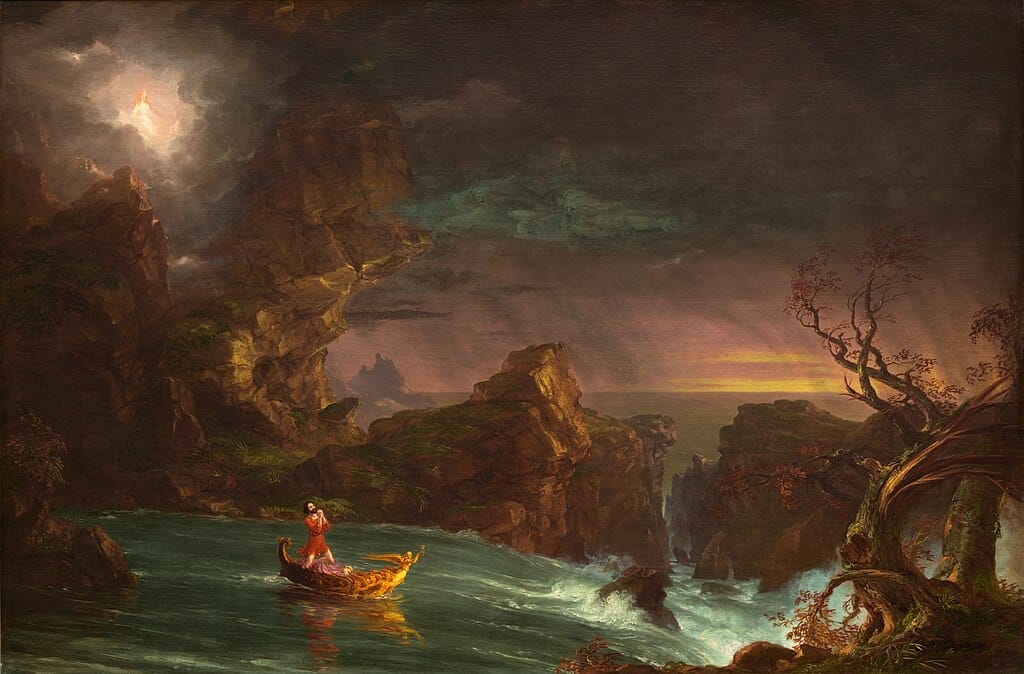

Cole's “Expulsion from the Garden of Eden” (1828) is a biblical masterpiece that illustrates Adam and Eve being cast out of paradise. The painting’s dramatic contrast between the lush, glowing Eden and the dark, foreboding world beyond reveals Cole's ability to convey profound spiritual themes through landscapes. It underscores his romantic sensibilities, drawing viewers into a deeply emotional experience.
Despite his focus on allegory, Cole excelled in straightforward landscapes, too. “The Falls of Kaaterskill” (1826) captures the majesty of the Catskill Mountains, emphasizing the sublime beauty of nature untouched by man. The painting’s cascading waterfall and verdant surroundings reflect Cole's deep admiration for the American wilderness, which became a recurring subject in his work.
Cole also painted “View on the Catskill—Early Autumn” (1837), a serene portrayal of a countryside at the cusp of seasonal change. His meticulous attention to detail and vibrant use of color celebrates the fleeting beauty of nature. This work epitomizes the Hudson River School’s emphasis on capturing the American landscape in its purest form.
In “The Titan’s Goblet” (1833), Cole ventured into the fantastical, depicting an enormous, goblet-like structure towering over a surreal landscape. The painting’s mystical tone and imaginative elements set it apart, demonstrating Cole's range as an artist. While rooted in Romanticism, the work hints at his visionary thinking, blending myth with nature.
Cole’s art reflected his concern for the environment. As industrialization expanded in the early 19th century, he used his paintings to critique humanity's disregard for nature. His writings echoed these concerns, lamenting the destruction of forests and the rise of factories. Cole’s message remains relevant today, resonating with modern environmental movements.
Despite his fame, Cole remained deeply humble. He considered himself more of a poet of nature than a traditional artist, often writing essays on the spiritual and moral significance of landscapes. His influence extended to artists like Frederic Edwin Church, who carried forward the Hudson River School's legacy.
Cole's untimely death in 1848 at the age of 47 left the art world mourning the loss of a visionary. However, his works continue to inspire. The Thomas Cole National Historic Site in Catskill, New York, preserves his legacy, offering visitors a glimpse into his life and creative process.
The landscapes Cole painted were more than scenes; they were stories filled with drama, emotion, and meaning. He understood the spiritual connection between humanity and the natural world, embedding this philosophy into his art. Each painting is a testament to his belief in nature’s divine power.
Thomas Cole was not just a painter; he was a storyteller who used his brush to remind us of the beauty and fragility of the world around us. His works invite viewers to pause and reflect on their place within the broader narrative of nature and history.
Through his timeless paintings, Cole achieved something extraordinary. He captured not only the beauty of America’s wilderness but also the deeper truths about humanity's relationship with the environment, creating a legacy that continues to speak to audiences today.
“If the imagination is shackled, and nothing is described but what we see, seldom will anything truly great be produced either in Painting or Poetry.”
Thomas Cole


